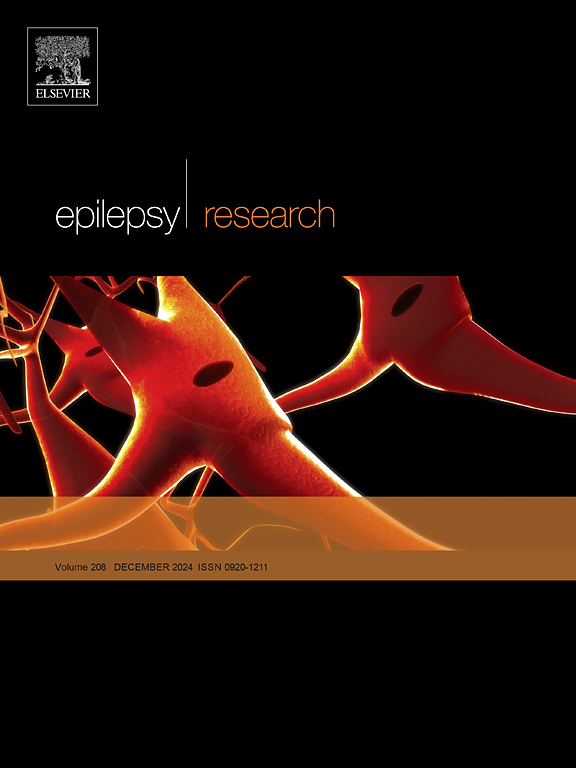磁共振引导的激光间质热疗法与切除手术治疗mri阳性局灶性皮质发育不良的耐药癫痫患者的比较:系统回顾和荟萃分析
IF 2
4区 医学
Q3 CLINICAL NEUROLOGY
引用次数: 0
摘要
目的比较磁共振引导下激光间质热治疗(MRgLITT)和切除手术(RS)治疗mri阳性局灶性皮质发育不良(FCD)患者的癫痫发作结局和并发症发生率。方法按照系统评价和荟萃分析首选报告项目(PRISMA)指南进行系统评价。研究报告了mri阳性FCD患者的癫痫发作结果和并发症。采用随机效应模型对数据进行meta分析。meta回归探讨了手术时平均年龄和平均癫痫持续时间与癫痫发作结果之间的关系。结果纳入34项研究,共1162例患者。MRgLITT的Engel I率为71.3 %,RS为65.6% %,两组间无差异(OR 1.11, 95 % CI 0.49-2.52; p = 0.79)。总并发症发生率相似(12 % vs 11 %;RD: +1 %,95 % CI, - 7 %至+12 %;p = 0.84)。MRgLITT瞬变率显著高于神经赤字(15 % 6.4 vs %;理查德·道金斯:+ 8.6 %,95 % CI, 17.8−0.6 % + %;p = 0.012),而永久赤字没有显著差异(1.7 % 4.4 vs %;理查德·道金斯:−3 %,95 % CI,−6 % + 1 %;p = 0.30)。在RS研究中,手术时的平均年龄与癫痫发作自由无关(OR每10年1.18,95 % CI 0.77-1.79; p = 0.43),平均癫痫持续时间也无关(OR每5年1.05,95 % CI 0.94-1.18; p = 0.343)。所有研究的偏倚风险都很严重。在FCD II型RS研究中,Engel I的合并比例为74.0 %(95 % CI 64.0-82.1; I²= 0.7 %)。结论在mri阳性FCD患者中,MRgLITT和RS的癫痫发作自由度和永久性并发症发生率相当,但MRgLITT显示出更高的短暂性神经功能障碍风险。研究水平的meta回归发现癫痫发作自由度与手术时的平均年龄或癫痫持续时间之间没有关联。解释受到间接比较、具有严重偏倚风险的观察性设计和某些分析中的实质性异质性的限制。需要前瞻性的、具有标准化结果的充分有力的头对头研究来证实这些发现并指导手术决策。本文章由计算机程序翻译,如有差异,请以英文原文为准。
A comparison between magnetic resonance-guided laser interstitial thermal therapy and resective surgery for drug-resistant epilepsy in patients with MRI-positive focal cortical dysplasia: A systematic review and meta-analysis
Objective
To compare seizure outcomes and complication rates between magnetic resonance-guided laser interstitial thermal therapy (MRgLITT) and resective surgery (RS) in patients with MRI-positive focal cortical dysplasia (FCD).
Methods
A systematic review was conducted in accordance with the Preferred Reporting Items for Systematic Reviews and Meta-Analyses (PRISMA) guidelines. Studies reporting seizure outcomes and complications in patients with MRI-positive FCD were included. Meta-analysis of the data was conducted using random effects models. Meta-regression explored associations between mean age at surgery and mean duration of epilepsy with seizure outcomes.
Results
Thirty-four studies were included, totaling 1162 patients for analysis. Engel I rates were 71.3 % for MRgLITT and 65.6 % for RS, with no difference between both arms (OR 1.11, 95 % CI 0.49–2.52; p = 0.79). Overall complication rates were similar (12 % vs. 11 %; RD: +1 %, 95 % CI, −7 % to +12 %; p = 0.84). MRgLITT had a significant higher rate of transient neurologic deficits (15 % vs. 6.4 %; RD: +8.6 %, 95 % CI, −0.6 % to +17.8 %; p = 0.012), while permanent deficits did not differ significantly (1.7 % vs. 4.4 %; RD: −3 %, 95 % CI, −6 % to +1 %; p = 0.30). In RS studies, mean age at surgery was not associated with seizure freedom (OR per 10 years 1.18, 95 % CI 0.77–1.79; p = 0.43), nor was mean epilepsy duration (OR per 5 years 1.05, 95 % CI 0.94–1.18; p = 0.343). Risk of bias was serious across studies. Across FCD type II RS studies, the pooled proportion of Engel I was 74.0 % (95 % CI 64.0–82.1; I² = 0.7 %).
Conclusion
In MRI-positive FCD, MRgLITT and RS yielded comparable seizure freedom and rates of permanent complications, but MRgLITT showed a higher risk of transient neurologic deficits. Study-level meta-regressions found no association between seizure freedom and mean age at surgery or epilepsy duration. Interpretation is limited by the indirect comparison, observational designs with serious risk of bias, and substantial heterogeneity in some analyses. Prospective, adequately powered head-to-head studies with standardized outcomes are needed to confirm these findings and guide surgical decision-making.
求助全文
通过发布文献求助,成功后即可免费获取论文全文。
去求助
来源期刊

Epilepsy Research
医学-临床神经学
CiteScore
0.10
自引率
4.50%
发文量
143
审稿时长
62 days
期刊介绍:
Epilepsy Research provides for publication of high quality articles in both basic and clinical epilepsy research, with a special emphasis on translational research that ultimately relates to epilepsy as a human condition. The journal is intended to provide a forum for reporting the best and most rigorous epilepsy research from all disciplines ranging from biophysics and molecular biology to epidemiological and psychosocial research. As such the journal will publish original papers relevant to epilepsy from any scientific discipline and also studies of a multidisciplinary nature. Clinical and experimental research papers adopting fresh conceptual approaches to the study of epilepsy and its treatment are encouraged. The overriding criteria for publication are novelty, significant clinical or experimental relevance, and interest to a multidisciplinary audience in the broad arena of epilepsy. Review articles focused on any topic of epilepsy research will also be considered, but only if they present an exceptionally clear synthesis of current knowledge and future directions of a research area, based on a critical assessment of the available data or on hypotheses that are likely to stimulate more critical thinking and further advances in an area of epilepsy research.
 求助内容:
求助内容: 应助结果提醒方式:
应助结果提醒方式:


